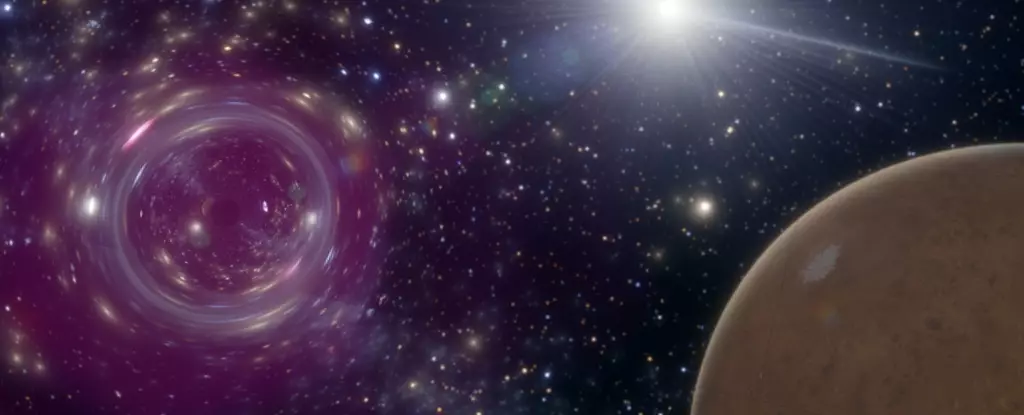The cosmos is filled with mysteries, and amidst them lies the salient question of dark matter—an elusive substance believed to account for a significant portion of the universe’s mass yet remains invisible to our instruments. Among the intriguing candidates for dark matter are primordial black holes (PBHs), hypothesized to have formed in the earliest moments of the universe. Recent research suggests these ancient black holes might traverse our Solar System more frequently than previously imagined, igniting scientific curiosity about their potential implications for astronomy and cosmology.
Primordial black holes are unique in that they are presumed to have originated from high-density regions of matter shortly after the Big Bang. These entities, often equated in mass to asteroids but condensed into an atomic-scale volume, represent a fascinating facet of theoretical physics. Over the course of approximately 13.8 billion years, PBHs would have dispersed throughout the universe, permeating its vast expanses. Considering their intriguing properties, scientists are eager to understand whether these black holes can bridge the gap between what we perceive through gravitational effects and what represents dark matter.
A team of physicists has conducted groundbreaking research estimating the frequency of PBHs traversing our Solar System. The study posits a striking conclusion: a PBH may loop through our celestial neighborhood approximately once every decade. While these black holes may be invisible to the naked eye, their gravitational influence could manifest as significant perturbations in the orbits of our planets.
The research primarily focused on Mars, as it appears to be particularly sensitive to the gravitational disruptions caused by these miniature black holes. Should a PBH approach within 450 million kilometers (approximately 280 million miles) of Mars, it could induce a minimal but detectable wobble in its orbital trajectory—around 1 meter over a decade. This slight deviation, albeit tiny, is still within the capacity of our current measuring technologies, which can determine Mars’ distance from Earth to a precision of about 10 centimeters.
The study emerged from an engaging thought experiment: what would happen if a PBH passed closely by an individual? Lead author and astrophysicist Tung Tran provided a vivid visualization: if a PBH were to come within a meter, it could send a person careening approximately six meters away in just one second. While this scenario is exceedingly improbable, it does raise essential questions about PBHs’ potential impacts on planetary dynamics.
The researchers proceeded to model the effects of a PBH’s flyby on other celestial bodies in our Solar System, particularly focusing on Mercury, Venus, and Mars. They discovered that Mars, with its robust monitoring framework, exhibited the most noticeable wobble. However, this leads to further inquiries: wouldn’t other celestial objects, like asteroids, produce similar gravitational influences? While it is true that asteroids do impact orbits, their effects manifest over longer temporal scales due to their relatively slower velocities. In contrast, PBHs traverse space at astounding speeds, reaching up to 200 kilometers per second. This significant difference renders their gravitational effects distinctive and ripe for investigation.
As researchers delve deeper into the realm of primordial black holes and their interactions within the Solar System, it becomes increasingly crucial to distinguish between mundane asteroids and these exotic entities. Future simulations are necessary to comprehensively map the numerous variables involved in cosmic interactions. Understanding the expected dynamics of both conventional celestial bodies and PBHs will allow astrophysicists to craft better observational strategies.
Physicist David Kaiser from MIT articulates the urgent need to differentiate the velocities and distributions of PBHs from more conventional cosmic debris. By doing so, scientists aim to refine their strategies for detecting the elusive signatures of primordial black holes.
The study of primordial black holes represents more than a mere inquiry into the nature of dark matter; it is a gateway to uncovering the intricacies of our universe. As astronomers remain vigilant for signs of Martian wobbles and seek to embrace the innovative methodologies required for detection, the journey toward unraveling the mysteries of dark matter advances. The cosmos spins on, whispering secrets, and in unraveling these layers, humanity continues its quest for cosmic understanding.


Leave a Reply